I’ve worn Aday’s wrap dress every day this week, but you wouldn’t know it. The highly anticipated dress—which sold out in two weeks—was carefully designed to be reconfigured in at least three ways, creating slightly different looks. One day, I wore it as an A-line swing dress, and the next, as a pinafore over a T-shirt. Then, with the addition of an adjustable belt to emphasize the waist, it became a more tailored, body-hugging dress.
“We wanted to create something that our customer would feel was fresh even if she wore it every single day,” says Nina Faulhaber, Aday’s cofounder. “This would be perfect for packing light on a trip—but many of our customers just want to own fewer clothes, and versatile clothing helps them accomplish this.”
There’s growing awareness amongst consumers that fast fashion is swiftly destroying the planet, sending greenhouse gases into the atmosphere, toxic chemicals into the waterways, and non-biodegradable synthetic fibers into landfills. Much of this waste is a result of the overproduction, and overconsumption, of clothing. In 2015, for instance, the industry churned out 100 billion pieces of clothing, even though there are only 7 billion people on the planet. Consumers have been conditioned to treat clothes as disposable, with most of us wearing garments between seven and 10 times before throwing them out.
Yet there’s still hope that things are changing, as brands respond to a growing number of consumers looking for a better way to deal with their closets. This involves creating clothes with classic, timeless silhouettes that can be worn in many contexts. But it also means creating some pieces that can morph with a few tweaks to create outfits that look different.
I tested outfits from Aday, Misha Nonoo, and Amour Vert to better understand what goes into designing garments that can be worn in different ways to different effects. I discovered that creating transformable clothes is a complex process, one that involves understanding the customer’s lifestyle and carefully picking fabrics. Here’s a look inside the design process.
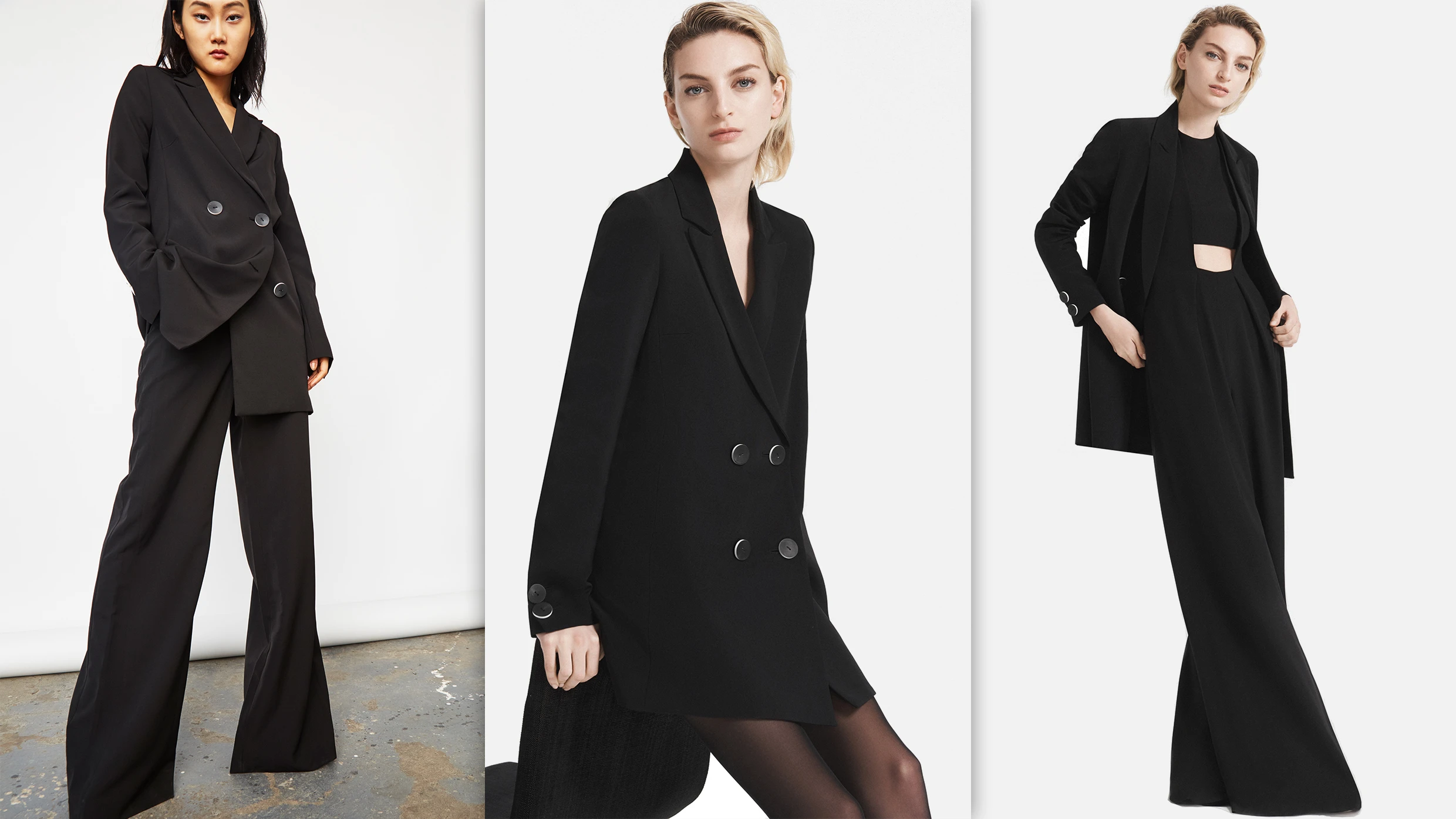
Misha Nonoo’s Florence Blazer Dress
Designer Misha Nonoo, for instance, has focused on going against the grain of the luxury fashion industry by encouraging her customers—who are typically well-educated professional women who otherwise shop at high-end brands—to pare down their wardrobes. With her eponymous brand, she wants to unravel the narrative that a luxurious lifestyle involves consuming more and more products, instead making the case that owning a few well-made pieces is both liberating and better for the planet. Unlike many other designers—particularly those in the luxury category—Nonoo does not create seasonal collections, but creates timeless pieces that stay in a permanent collection. She has found that a growing number of consumers are converting toward wardrobe minimalism. “I’ve found that a lot of my customers want to consume more consciously,” says Nonoo. “But also, time is a luxury, and it takes a lot of time and mental energy to constantly think about what’s in style.”
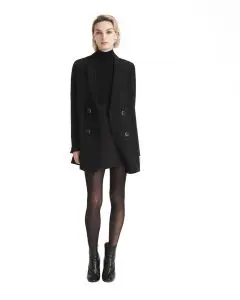
Nonoo says that all of this versatility was carefully thought out from the very beginning. She says that part of the design process involves finding multiple use cases for each outfit. “As we start designing an outfit, we ask whether the outfit can be worn in multiple ways, in different contexts,” she explains. “If it doesn’t make the cut, we won’t add it to the collection.”
The brand is best known for its Easy Eight collection, which includes eight pieces that can be combined to create a total of 22 different looks. This inherently involves playing around with different ways of wearing each garment in the collection. For instance, Nonoo’s Chiara jumpsuit and Elena dress have little cutouts under the bust area to make them a little more fun and risqué for cocktail parties, but they can be worn with sleeveless button-down shirts to make them office-appropriate. Nonoo says that the brand invests a lot of time showing customers how to style the outfits on the website, through the Instagram feed, and in a series of social media videos where Nonoo herself often shows how to wear an outfit in various ways.
Designing in this way also involves a clever use of fabrics and colors. She almost always creates pieces in solid black, white, and gray because they are neutral and pair well together. Nonoo prefers using high-tech synthetic fabrics because they offer more functionality. Many of her garments don’t need to be ironed, and since they are moisture wicking, they don’t need to be washed as frequently. Nonoo realizes that there are trade-offs when it comes to using these fibers, which are made from plastic. “We’re a sustainable brand and I am very open about the fact that we use synthetics,” she says. “I’m in the business of creating pieces that women will wear day after day, and bring with them when they travel. In the long run, I think it is more sustainable for women to be able to wear these pieces often, over a long time, because they are made with performance materials.”
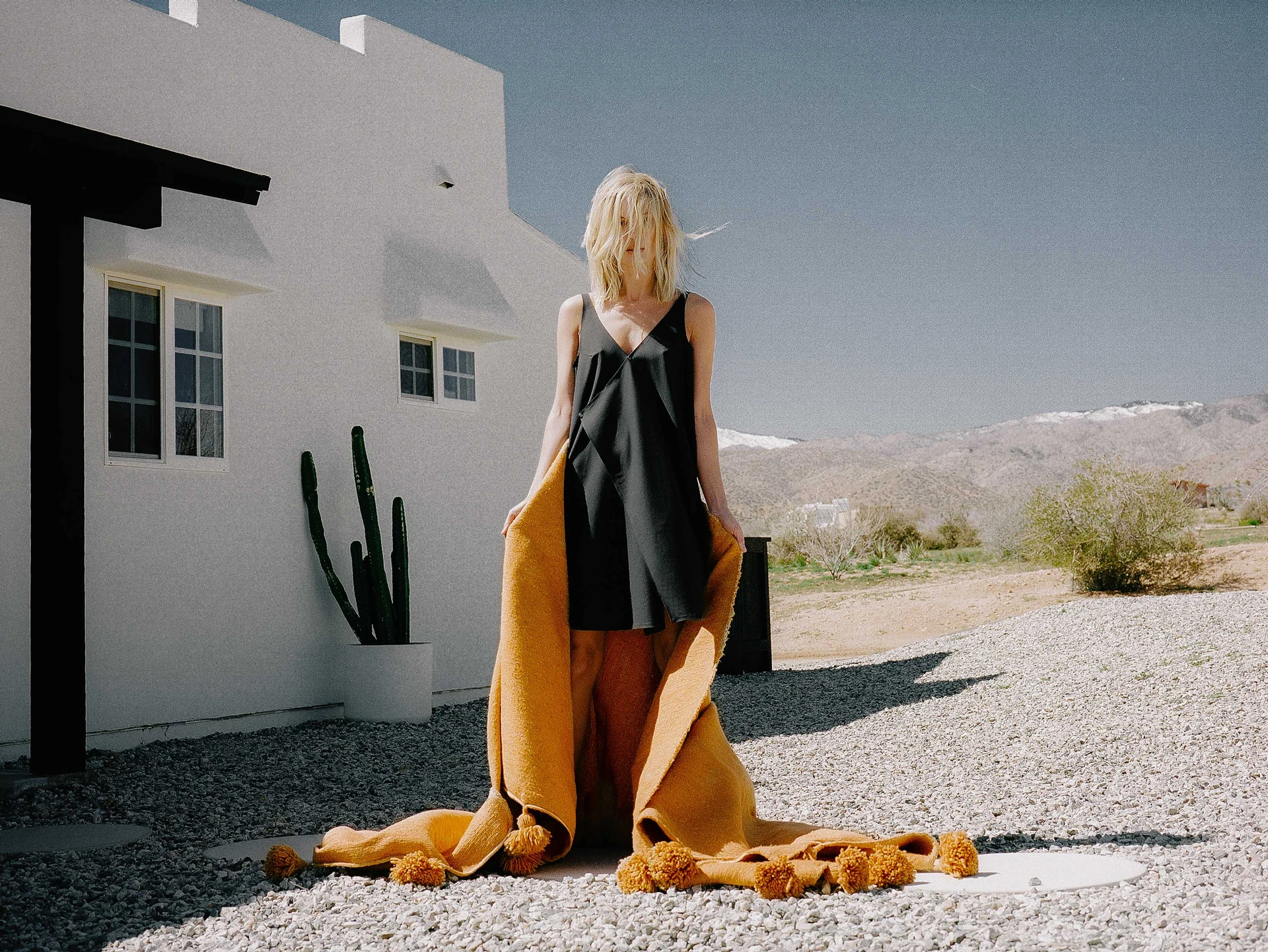
Aday’s Over In One Dress
As the weather got warmer, I switched over to Aday’s $165 Over In One dress. Like Misha Nonoo, Aday relies heavily on performance fabrics that are almost always synthetic. Aday’s designers included this dress within a five-piece travel capsule collection, which meant that it had to be breathable, wrinkle-resistant, and moisture wicking, so they used a nylon elastane blend.
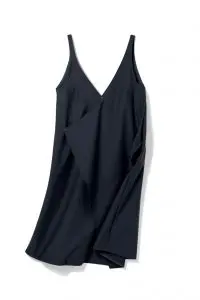
Nina Faulhaber says that the company spends a lot of time collecting customer feedback when it designs each item, to make sure that each of the different ways of wearing it responds to real needs. Since Aday has not historically made many dresses, it reached out to a hundred of its most loyal customers to ask what they would want in their ideal dress. Almost all of them chose to provide very detailed feedback, which went on to inform almost every aspect of the final design of the dress, from the wrap silhouette, to its length, to the fact that it has pockets, to the adjustable belt, to the final colors (which include white, black, and green). “It doesn’t matter if the dress is creatively designed to be worn in different ways if our customers don’t actually wear it in those ways,” says Meg He, Aday’s other cofounder. “If pieces are truly functional, they will get more use.” And by extension, the customer will need fewer pieces in her closet.
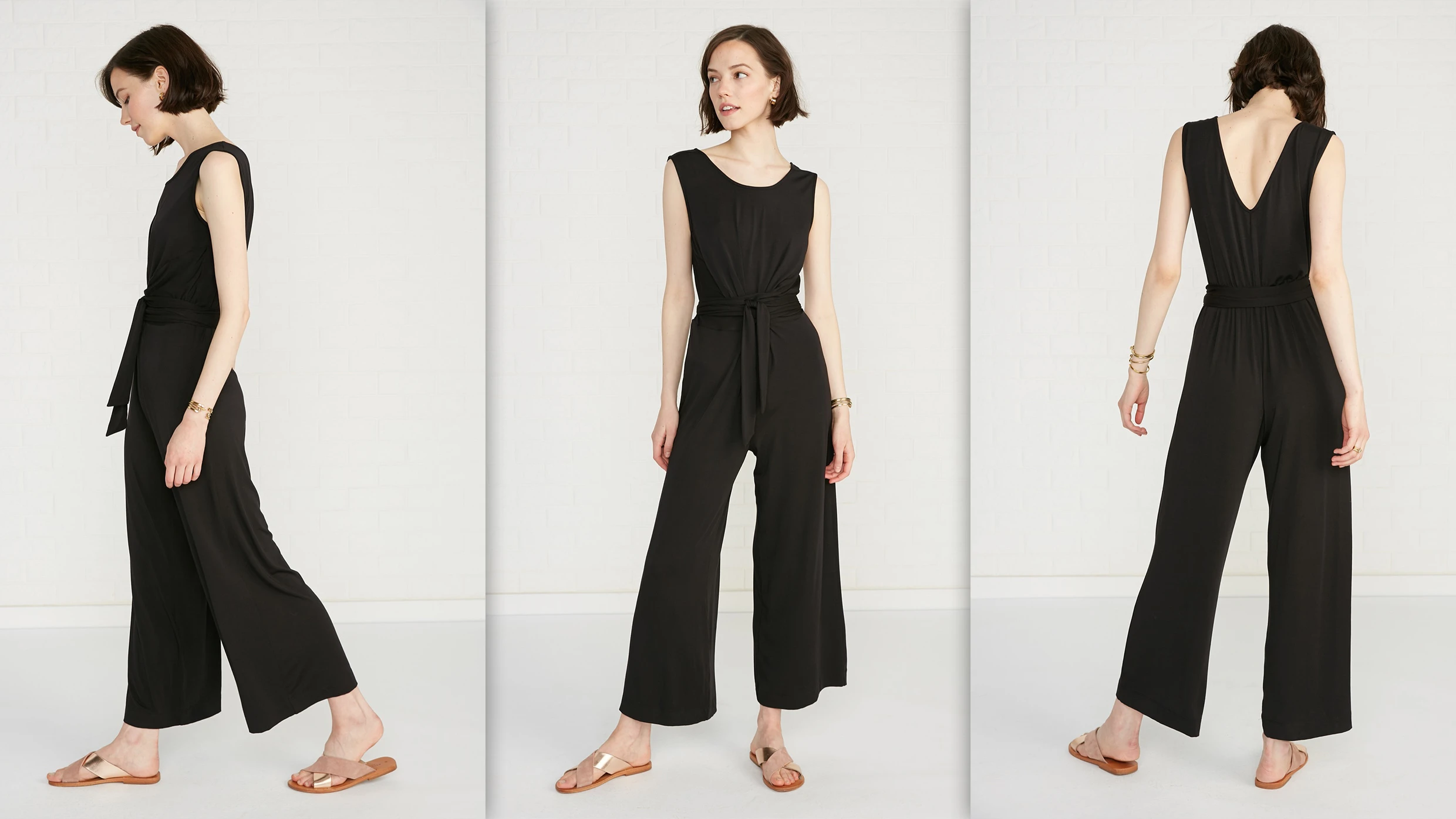
Amour Vert’s Gardenia Jumpsuit
For one week, I wore the Gardenia Jumpsuit, which is made by Amour Vert, a brand that makes products from sustainable materials and manufactures them locally to better ensure that workers are treated well. The black, cropped-leg jumpsuit is made from a soft fabric that drapes on the body. It has two pieces of fabric at the waist that can be tied in various ways to create different effects. If you create a bow in the back, it accentuates your waistline, but if you tie it in the front or on the side, it creates a fun embellishment. Aylin Beyce, Amour Vert’s head of design, says that she wore the jumpsuit throughout her pregnancy because it could accommodate her baby bump, and she continued to wear it in her post-pregnancy months because the tie in the front was flattering at a time when her body was going through changes.
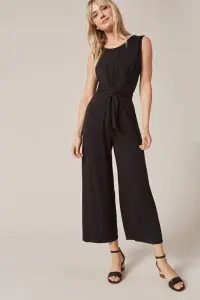
Unlike the two other brands, Amour Vert tries to use organic materials whenever possible. This jumpsuit is made from the brand’s proprietary fabric, which is sourced from sustainably harvested beechwood that is grown without genetic manipulation or pesticides, and requires 10 times less water than cotton. The entire sourcing process is also carbon neutral. But importantly, the fabric feels very soft, drapes nicely, and is wrinkle-resistant.
Beyce says the way the garment feels on the skin, and the way it flatters the body, is incredibly important when it comes to designing versatile pieces. The softness of this jumpsuit, for instance, means that the customer will find it comfortable and therefore want to wear more often. And the ties at the waist don’t just create different looks, they create an hourglass silhouette that makes many women feel good about themselves. “In the end, you can’t force someone to pare down their wardrobes and wear less,” says Beyce. “But you can encourage this behavior by making them so comfortable and flattering that they reach for them day after day.”
I found this to be true. I always had pieces in my wardrobe that I reached for more frequently because they made me feel good. (Some experts estimate that consumers wear only 20% of their clothes.) I appreciated how thoughtfully each of these three outfits was designed: It made it easy for me to come back to them every day because they always looked good, and the little tweaks prevented me from getting bored. The experience has prompted me to purge little-used pieces from my wardrobe, but this has also forced me to confront a devastating reality: Imagine how many resources would have been saved if I had never bought those pieces in the first place?
Recognize your brand’s excellence by applying to this year’s Brands That Matter Awards before the early-rate deadline, May 3.
